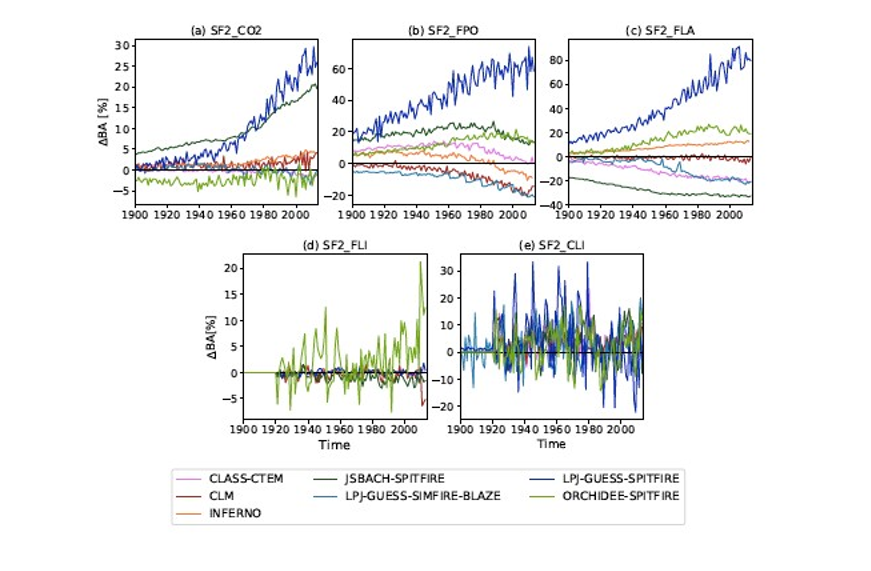It is very exciting to see that the FireMIP paper on the sensitivity of burnt area to environmental and anthropogenic controls, led by Lina Teckentrup, is now out in Biogeosciences Discussions (https://doi.org/10.5194/bg-2019-42). In this paper, the FireMIP group has analysed historical outputs from seven state-of-the-art fire models to understand how differences in models translate into differences in simulated fire regimes. The sensitivity experiments isolate the impact of the individual drivers of fire, including atmospheric CO2, population density, land-use change, lightning and climate. These analyses show that the major causes of diverging trajectories between models are related first to the way anthropogenic ignitions and suppression are treated in individual models, and second to the effects of land-use on vegetation and fire. These analyses also show that there is a strong influence of climate on the inter-annual variability in burned area, and this implies that we need to improve the simulation of climate-induced changes in biomass accumulation and fuel properties in order to capture extremes in fire behavior better. This paper helps to highlight which areas we urgently need to focus on in developing a new fire model as part of the work of the Leverhulme Centre on Wildfires.

